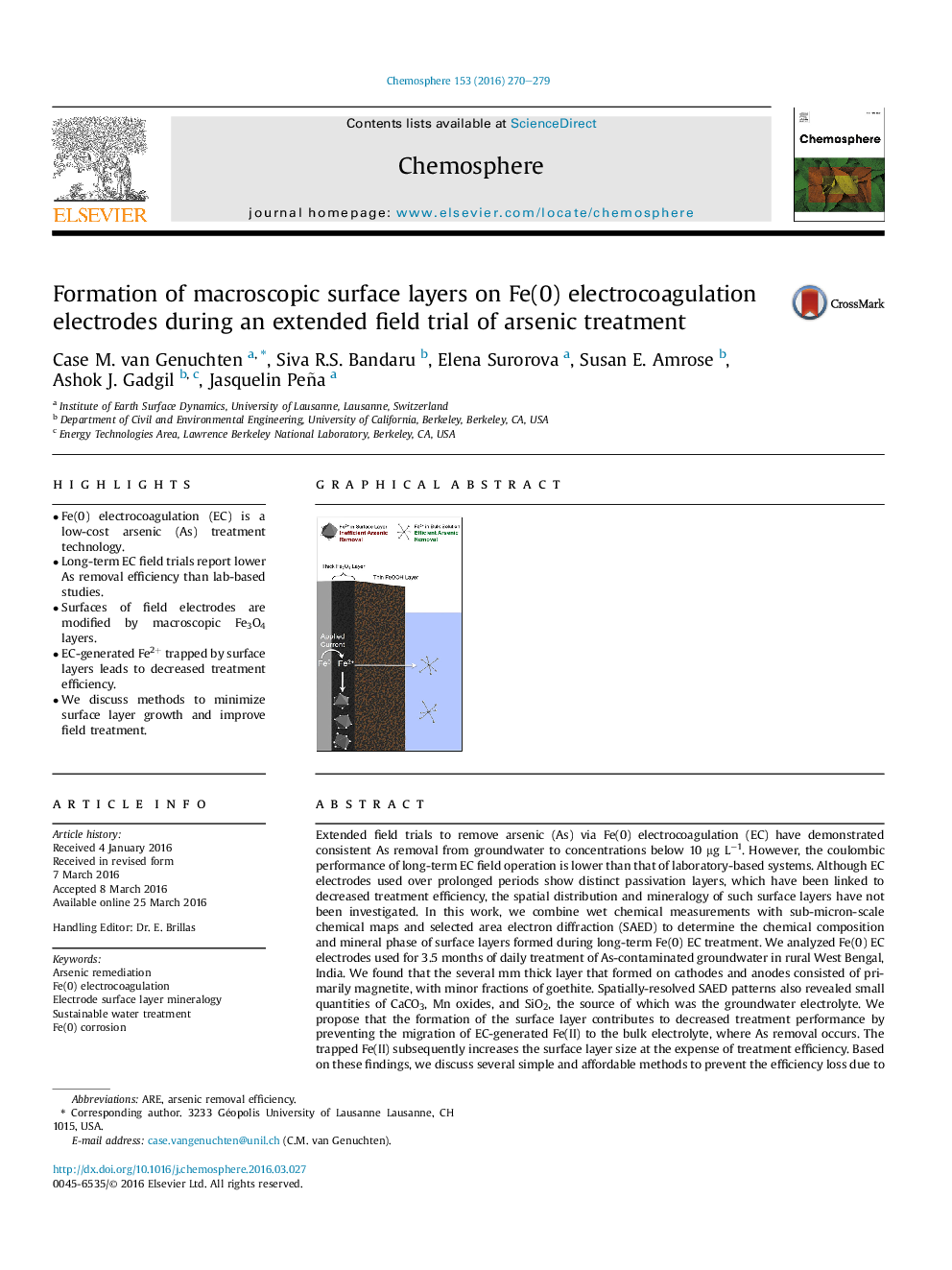| Article ID | Journal | Published Year | Pages | File Type |
|---|---|---|---|---|
| 4407675 | Chemosphere | 2016 | 10 Pages |
•Fe(0) electrocoagulation (EC) is a low-cost arsenic (As) treatment technology.•Long-term EC field trials report lower As removal efficiency than lab-based studies.•Surfaces of field electrodes are modified by macroscopic Fe3O4 layers.•EC-generated Fe2+ trapped by surface layers leads to decreased treatment efficiency.•We discuss methods to minimize surface layer growth and improve field treatment.
Extended field trials to remove arsenic (As) via Fe(0) electrocoagulation (EC) have demonstrated consistent As removal from groundwater to concentrations below 10 μg L−1. However, the coulombic performance of long-term EC field operation is lower than that of laboratory-based systems. Although EC electrodes used over prolonged periods show distinct passivation layers, which have been linked to decreased treatment efficiency, the spatial distribution and mineralogy of such surface layers have not been investigated. In this work, we combine wet chemical measurements with sub-micron-scale chemical maps and selected area electron diffraction (SAED) to determine the chemical composition and mineral phase of surface layers formed during long-term Fe(0) EC treatment. We analyzed Fe(0) EC electrodes used for 3.5 months of daily treatment of As-contaminated groundwater in rural West Bengal, India. We found that the several mm thick layer that formed on cathodes and anodes consisted of primarily magnetite, with minor fractions of goethite. Spatially-resolved SAED patterns also revealed small quantities of CaCO3, Mn oxides, and SiO2, the source of which was the groundwater electrolyte. We propose that the formation of the surface layer contributes to decreased treatment performance by preventing the migration of EC-generated Fe(II) to the bulk electrolyte, where As removal occurs. The trapped Fe(II) subsequently increases the surface layer size at the expense of treatment efficiency. Based on these findings, we discuss several simple and affordable methods to prevent the efficiency loss due to the surface layer, including alternating polarity cycles and cleaning the Fe(0) surface mechanically or via electrolyte scouring.
Graphical abstractFigure optionsDownload full-size imageDownload as PowerPoint slide
